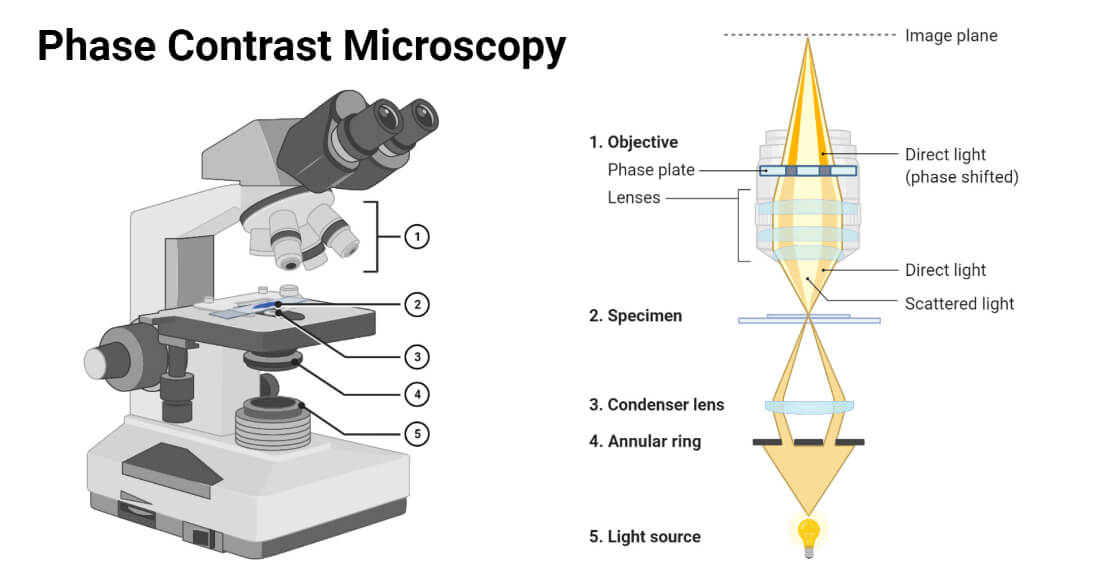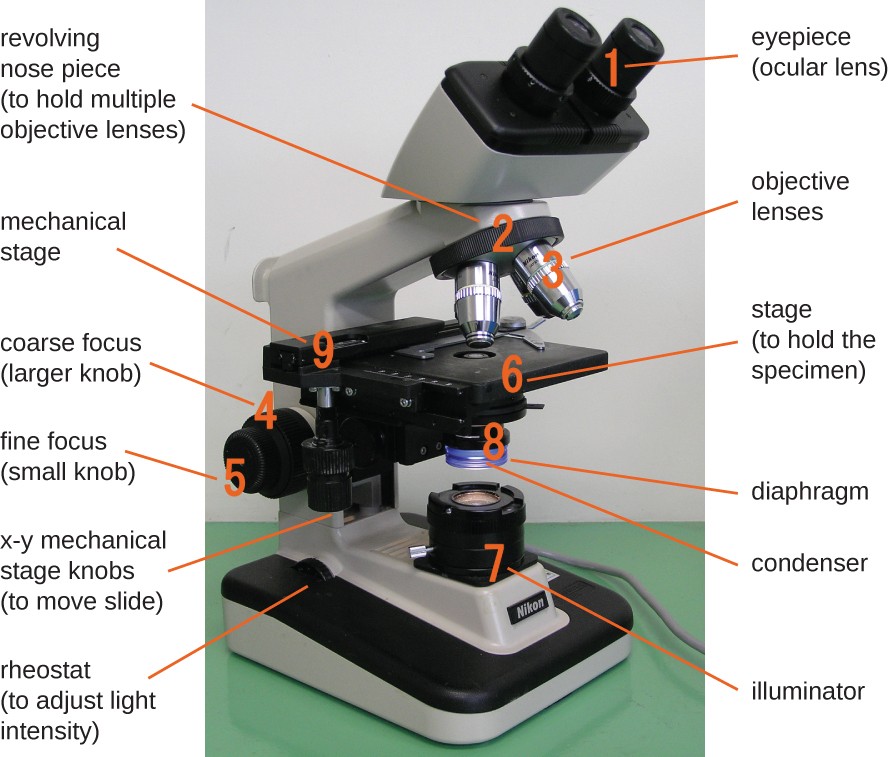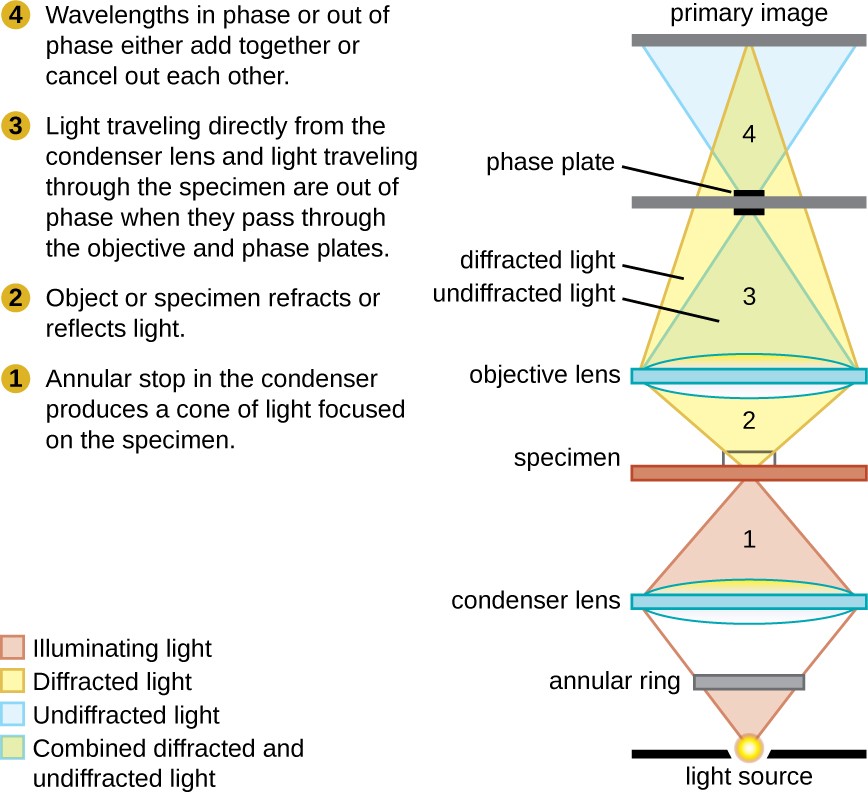An Annular Stop Is Used for Which Type of Microscopy
A transmission electron microscope a scanning electron microscope a brightfield microscope a darkfield microscope a phase-contrast microscope 9. By the use of a annular stop in the condenser and a phase plate within an objective lens aligned with the annular stop a light beam can be split and each of the separated beams will pass through the same transparent medium.

Phase Contrast Microscopy Definition Principle Parts Uses
So in my in my opinion it is phase contrast microscope that uses any annular stop.

. A annular stop is also usedfor dark field but the stop is now outside the field of view. A transmission electron microscope b. A brightfield microscope d.
Used to examine an image produced with light that hits a specimen indirectly owing to the use of an opaque light stop. Widely used and easily available. A brightfield microscope d.
What type of microscope uses an annular stop. A darkfield microscope e. Used to examine an image produced with light that hits a specimen indirectly owing to the use of an opaque light stop.
To create altered wavelength paths an annular stop is used in the condenser. Stains are often needed. And what this does is that structures that refract light appear darker against a bright background of only un refracted light.
To create altered wavelength paths an annular stop is used in the condenser. Parallel rays exit the condenser. A phase-contrast microscope 8.
It is the oldest and simplest type of microscope that creates an image by altering the wavelengths of light rays passing through the specimen. Often used to view living microorganisms without stains. Often used to view living microorganisms without stains Fluorescence Commonly used clinically.
Uses an annular stop refraction and interference to produce relatively high-resolution images without stains. A scanning electron microscope c. A darkfield microscope e.
There is an annular stop in the front focal plane of the condenser which is imaged at infinity. Imaging of undeviated light left. An annular stop is used for which type of microscopy.
So the annular stop is a very important tool for a microscope that wants to use that type of method of visualizing a specimen. A transmission electron microscope b. An annular vacuum sucker type portable metallurgical microscope base is composed of an annular magnetic iron sheet 1 and an annular sucker 2 and is characterized in that the annular magnetic iron sheet 1 firmly adheres to the annular sucker 2.
The light coming from the condenser is split into two bundles by the object the undeviated and the deviated light. The annular stop produces a hollow cone of light that is focused on the specimen before reaching the objective lens. Principle of Phase Contrast Microscope The condenser of a phase-contrast microscope has an annular stop an opaque disk with a thin transparent ring that produces a hollow cone of light.
A scanning electron microscope c. What type of microscope uses a cone of light so that light only hits the specimen indirectly producing a light image on a dark background. Which type of microscopy would work best for viewing internal cell structures.
Which microscope is used to see internal structures of living cells in a natural state. Which type of microscope would be the best choice for viewing very small surface structures of a cell. A scanning electron microscope c.
A brightfield microscope d. Microbiology 0th Edition Edit edition Solutions for Chapter 2 Problem 8MCQ. What type of microscope uses an annular stop.
As this cone passes through a cell some light rays are bent due to variation in density and refractive index within the specimen and are retarded by 14 wavelength. It is the oldest and simplest type of microscope that creates an image by altering the wavelengths of light rays passing through the specimen. As the name implies thebackground is dark and the object is bright.
A scanning electron microscope c. A darkfield microscope e. The annular stop produces a hollow cone of light that is focused on the specimen before reaching the objective lens.
What type of microscope uses an annular stop. What type of microscope uses an annular stop. Used for examining common protists bacteria and tissues.
Phase contrast microscope is an optical microscopy technique that converts phase shifts in light passage via a transparent specimen to brightness changes in the imagePhase contrast microscope is used to enhance the contrast of light microscopy images of colourless and transparent specimens thus enabling visualisation of cells and cell components that could be. A brightfield microscope d. The annular stop produces a hollow cone of light that is focused on the specimen before reaching the objective lens.
Dark field microscopy is a method which also creates contrastbetween the object and the surrounding field. To create altered wavelength paths an annular stop is used in the condenser. Microbiology 1st Edition Edit edition Solutions for Chapter 2 Problem 8MCQ.
A transmission electron microscope b. A darkfield microscope e. Only lightcoming from the outside of the beam passes through the object and it cannotbe seen.
A transmission electron microscope b. It is the oldest and simplest type of microscope that creates an image by altering the wavelengths of light rays passing through the specimen. What type of microscope uses an annular stop.
An annular stop and phase plate are used for which type of microscopy. Helpful in distinguishing living from dead cells finding molecules within a cell and for immunostaining. The annular vacuum sucker type portable metallurgical microscope base is used in cooperation with a portable metallurgical.
An annular stop and phase plate are used for which type of microscopy A Confocal. The Gram-staining procedure is best described as which of. Used to examine an image produced with light that hits a specimen indirectly owing to the use of an opaque light stop.

Instruments Of Microscopy Microbiology

Microscopy Microbiology Confocal Microscopy

Instruments Of Microscopy Microbiology

Light Path In Phase Contrast Microscope Contrast Microscope Biology Class

Comments
Post a Comment